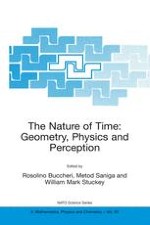There are very few concepts that fascinate equally a theoretical physicist studying black holes and a patient undergoing seriolls mental psychosis. Time, undoubtedly, can well be ranked among them. For the measure of time inside a black hole is no less bizarre than the perception of time by a schizophrenic, who may perceive it as completely "suspended," "standing still," or even "reversing its direction. " The nature of time is certainly shrouded in profound mystery. This, perhaps, since the concept entails multifarious, and occasionally incongruous, facets. No wonder the subject attracts the serious attention of scholars on the one hand, and of the lay public on the other. Our Advanced Research Workshop is an excellent il lustration of this point, as the reader will soon discover. It turned out to be a unique professional forum for an unusually lively, effective and fruitful exchange of ideas and beliefs among 48 participants from 20 countries worldwide, selected out of more than a hundred applicants. The present book is based on the select talks presented at the meeting, and aims to provide the interested layperson and specialist alike with a multidisciplinary sampling of the most up-to-date scholarly research on the nature of time. It represents a coherent, state-of-the-art volume showing that research relevant to this topic is necessarily interdisciplinary and does not ignore such delicate issues as "altered" states of consciousness, religion and metaphysics.
